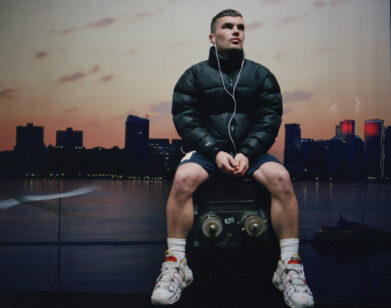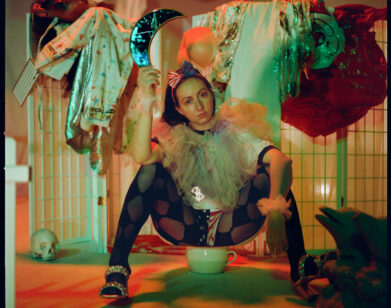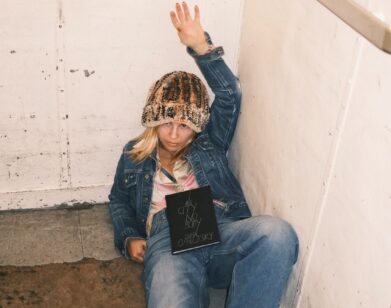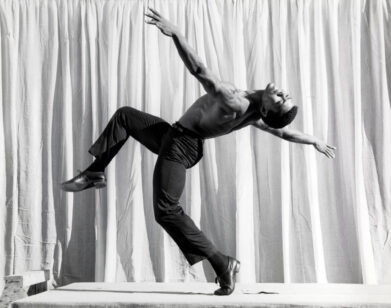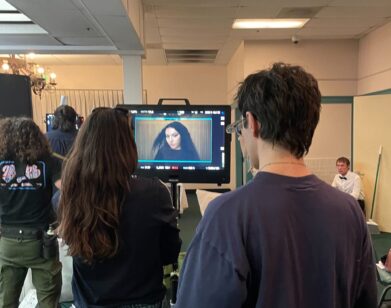Death Becomes Her
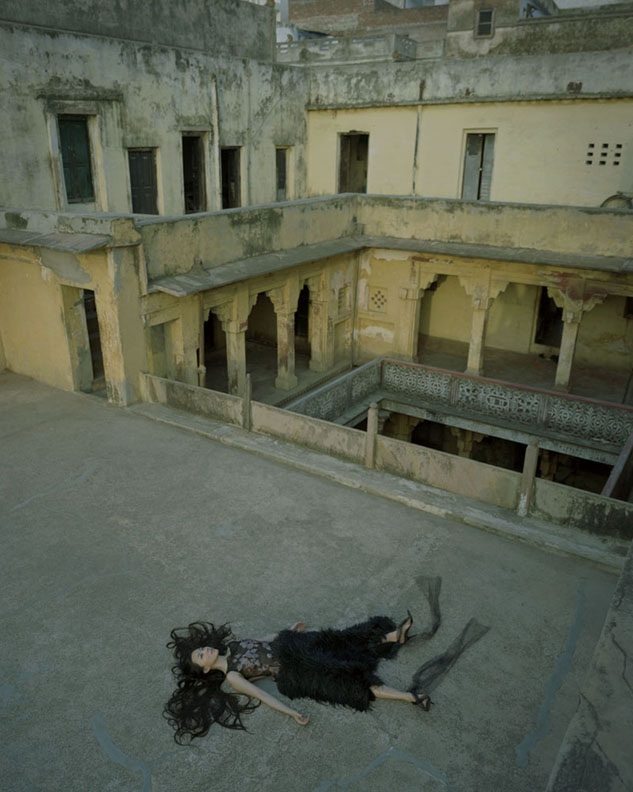
The first death shot by Kaoru; Koizumi Kyoko wears Sybilla, 1993. Courtesy Von Lintel Gallery and the artist.
The suitcase is not large, but it fits her curled frame; her possessions (a stuffed rabbit, a clock, what looks like a French horn) provide a nest for the perfectly-coiffed woman who is most certainly dead–or made to look that way. Izima Kaoru has been crafting and capturing the death fantasies of models and actresses in his native Japan for over a decade, photographing his victims from multiple vantage points to tackle a subject that has not always been well-received. And while the cause of death may not always be apparent in his work, Kaoru’s fashion photography background (not to mention his penchant for couture) shines through, providing a strange and beautiful contrast to the lifeless forms of his subjects. Izima Kaoru’s latest body of work will be on view at New York’s Von Lintel Gallery beginning tomorrow.
LUCY SILBERMAN: What’s the fascination with death?
IZIMA KAORU: Death is an important moment for every human but we tend to ignore or hide it as if we have no business in it.
LS: You mix this with an interest in fashion.
IK: Fashion photography is a simulation play on everyday lives or life styles, to fulfill the readers’ desires for the ideal lives or styles that they want but cannot be courageous enough to lead. I think then, the moment of death can be simulated as a theme of fashion photography, as well.
LS: It already corresponds in the manner of a “fashion victim.”
IK: I am at the other end from fashion victims. The reason why I was working with fashion magazines is because fashion photography was, for me, a place to experiment. Where innovative fashion designs are born, innovative fashion photography will be called for and be born as well.
LS: How do you decide which models and actresses to photograph?
IK: Whether she can play a beautiful corpse. Whether she can enjoy [the] project with me.
A new work from Izima Kaoru; Kimura Yoshino wears Alexander McQueen (482), 2007. Courtesy of Von Lintel Gallery and the artist.
LS: You began photographing death fantasies in 1993. What have you learned about your subject matter since?
IK: Through the production of this project, I have realized that death is the most important theme for human beings. Death is the end or the failure of life, but we cannot avoid the clear fact that a person dies someday. I have also realized that the more I think about death, the more I think about life.
LS: What do you think is the most poetic thing about death?
IK: That a death is the beginning of a legend as much as the end of a story, [a way] to fix the proof of his/her life as something universal into people’s memories.
LS: Of all of the deaths you’ve captured, was one the most memorable?
IK: Every “death” played important role for me. But the most memorable, then it is the first “death,” still.
LS: Are the photographs received differently in Japan, Europe, or the United States?
IK: There is a strong subconsciousness in Japanese to see “death” as a taboo, so I need to be extra careful about which ones to exhibit, how to promote the show.
LS: Does the fact that your work revolves around the idea of death give you pause?
IK: Not at all. How can I be uncomfortable by the theme I myself had chosen?
LS: What are you hoping others will see in your photographs?
IK: The dignity of death. I think we should not avoid death because we are scared of it but take it as something more peaceful and beautiful, by being conscious of it as a matter close to everyone. What I want to say here is that the “tragic corpse” can be something disgusting or to feel sorry for but the spirit of the body is most likely already free from the physical pain and is free and in peace. I [feel] that I visualize such a spiritual concept. I am imagining the point of view of the dead’s spirit.
LS: What is your death fantasy?
IK: I never fantasize [about] death, myself.
Izima Kaoru’s new work will exhibit at the Von Lintel Gallery from January 29–April 25.

